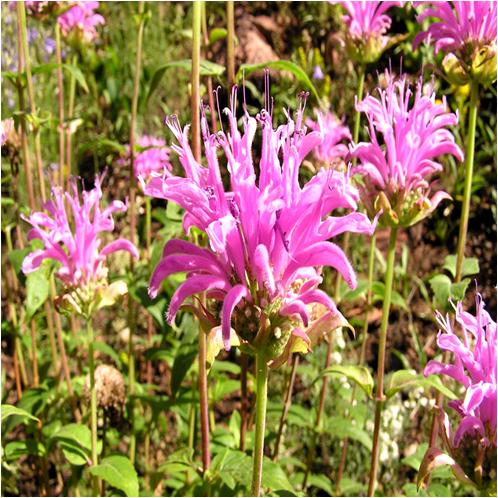How to Grow Bergamots at Home

Bergamots, also known as monarda fistulosa, wild oregano, wild bergamot, horse mint or bee balm, are one of the most famous wild aromatic herbs in the world. This well-liked and flashy perennial belongs to the mint family. Bergamots are known for their open branched stems and bright tubular flower – white, pink, violet and purplish in color.
You simply cannot miss any chance to grow Bergamots at home as it has wide range of both edible and medicinal uses. Besides attractive and beautiful appearance, Bergamots are frequently used as a medicinal plant, honey plant, medicinal plant, and garden ornamental. The fragrant and slightly spicy leaves of this culinary herb are used to make mint tea and to garnish various salads or dishes. Its amazing flavor perfectly complements the pizzas, breads, and other edibles. Moreover, bergamots are used to treat excessive flatulence, respiratory ailments, cough, skin infections, colds, fevers, stomach aches, nosebleeds, insomnia, minor wounds and many more.
Growing Bergamots at home is one of the simplest gardening activities. It is cost-effective project that one can perform with the help of few seeds and tools.
Instructions
-
1
Select Bergamots Seeds
Visit your nearest gardening shop, nursery or search online for a variety of bergamots seeds. Organic and Heirloom are the most common and famous Bergamots Seeds that you can consider. -
2
Learn about the Right Time of Sowing
When it comes to sowing the bergamots seeds, you have two options available:
- Sow indoor in trays or pots late February to mid-March and then transfer to the outdoor space.
- Direct sow outdoor in early spring when minor frost (ice) is still possible or in October. -
3
Sow the Bergamot Seeds
Fill a large gardening tray or pot with rich soil and do away with stones and other particles. Scatter the tiny bergamot seeds over the surface of the soil and lightly cover them some soil. -
4
Wait until Germination
Bergamot’s seeds should sprout (germinate) in 10, 14 or a maximum of 40 days. Keep the temperature between 60 to 70° F until the seeds germinate. Water the pot or tray once the soil is dry, using a watering can or spray bottle. -
5
Choose where to grow Bergamots
Until the seeds germinate, choose the location in your house where you like to shift bergamots. Select a site that receives proper sunlight. Tilt the soil properly with a pickaxe or mattock and add in some compost and manure to make it rich and well-drained. -
6
Thinning the Bergamot Seedlings
Continue watering, caring and maintaining proper temperature until the bergamot seedlings grow to certain height and are easy to handle. Now thin out Bergamot Seedlings, removing the weak joined and infected seedlings. -
7
Dig out the Seedlings
Fill the pot or tray with water so that the soil is fully soggy. It helps in taking out the seedling without harming them.Place the removed seedlings on a tray and take them to the selected location. -
8
Make Holes
Use your index finger or a thick piece of wood to make 1/4" deep holes in the selected location according to the number of seedlings. Make sure to keep proper distance between the holes – at least 18 to 24" (45-60 cm) apart. -
9
Plant the Bergamot Seedlings
It is the time to shift the bergamot to the outdoor spot. Place the seedlings in the holes and fix them with some soil. Use water-can or hose to water the newly planted seedlings. -
10
Water on Regular Basis
Water the Bergamot Seedlings on regular basis once the soil is about to dry, making sure to avoid over-watering. Moreover, remove the weeds around the seedlings that appear time to time. -
11
Wait until Harvest
Wait until the delicate seedlings grow into healthy Bergamot plants and their flowers open up thoroughly. Collect the Bergamot flowers during spring or summer season.



